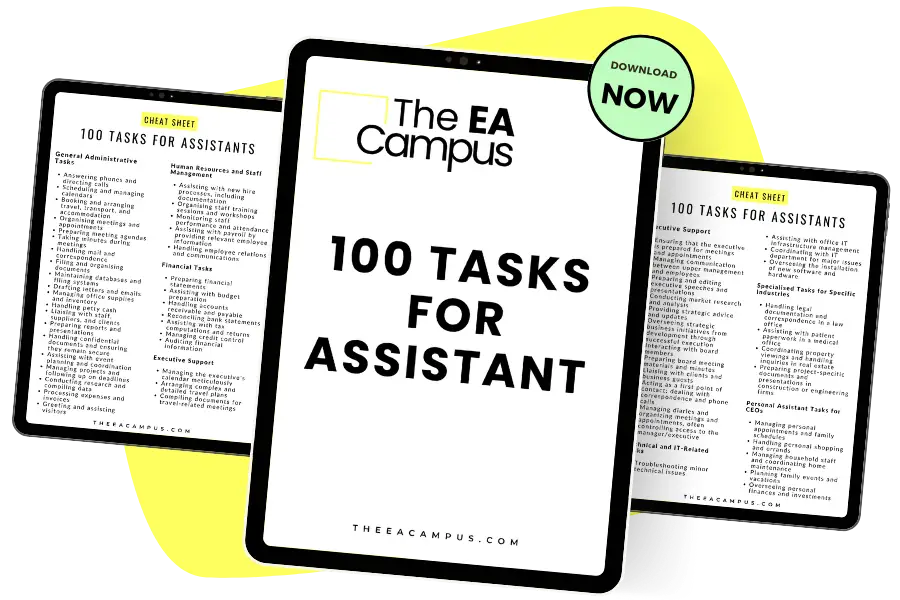Problem-solving is one of the critical skills that office employees need, especially as workplaces increasingly look for employees who can independently tackle challenges. You’ll see this skill appearing more frequently in job applications for Assistants because we’re often called upon to handle issues that others may not know how to solve.
Problem-solving for Assistants can range from straightforward issues that everyone should address—like cleaning out the fridge at the end of the week or replacing the printer toner—to incredibly complex problems, such as restructuring the Assistant team, replacing an IT supplier, or even moving offices.
Fixing problems at this level is challenging, but it’s essential if we want to be viewed as a business asset rather than just an administrative function. So, how do we go about identifying and solving problems at work? Here are the seven steps you need to take.

This List of Tasks for Executive Assistants Download helps you recall and record every task you handle, supports you in writing polished CVs and precise job descriptions, and recognises additional responsibilities you can undertake.
You might see many problems within your organization, but you may not necessarily have the authority or skill set to tackle each one. Instead, look for areas where you can make a difference. Assistants have a unique position that often allows them to see when processes and procedures aren’t working. However, not all issues will be within your control to solve. Finding the right problems—ones you have the ability and authority to tackle—makes a significant impact.
Sometimes, we find ourselves constantly reacting to issues, putting out fires as they pop up. If this sounds familiar, it may be time to step back and identify “quick win” problems that can be solved with proactive steps rather than constant reaction. Block out some time (perhaps when your Executive is in a long meeting) and list recurring issues your Executive, team, or department often bring to you. Once you have a list, start defining the problem with questions like:
In addition to the questions above, consider who the problem impacts and the ripple effect it may have. For example, if your Executive regularly forgets to bring the right papers to meetings, it affects not only them but also everyone attending the meeting. Workplace problems often have a broader reach than you might realize, so try to get a sense of how widespread the impact is within your organization.
You don’t have to solve workplace issues alone. Let your Executive know you’ve identified a problem and are working on a solution. Brainstorm with your Executive, team members, other Assistants, and even search online for ideas. Google is an excellent first step for any problem—often, someone else has already found a good solution you can adapt.
This is the exciting part: actually fixing the problem. After brainstorming potential solutions, choose what seems like the best course of action. Document how you arrived at this conclusion and outline the process to resolve the issue.
Implementing the solution can be the most challenging part, especially if it involves changing people’s behavior (which can be an uphill battle!). Workplace issues are often best solved by creating a consistent process and ensuring everyone follows it. Be a champion of the new process and work closely with key stakeholders to keep everyone informed of their roles in it. Regular communication is essential to keep everyone aligned.
The final step is ensuring that the problem stays fixed. This is crucial because it’s easy to slip back into old habits. Monitoring the issue will:
To truly excel as an Assistant, mastering problem-solving skills is essential—and it’s just one of many competencies that can elevate your role. If you’re ready to take your skills to the next level, consider enrolling in our Effective Assistant Online Course. This course is designed to give you the tools, strategies, and confidence needed to handle challenges with ease, manage projects more effectively, and become a proactive partner to your Executive. Join us at The EA Campus and unlock your potential to become an indispensable asset in your organization.
Share this article:
Join 30,000+ Assistants receiving our carefully crafted weekly newsletter packed with valuable tips, tricks, and insights tailored specifically for Assistants like you.